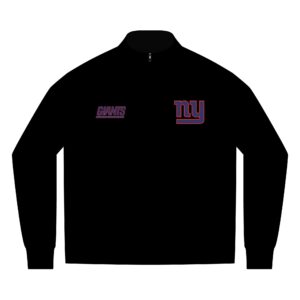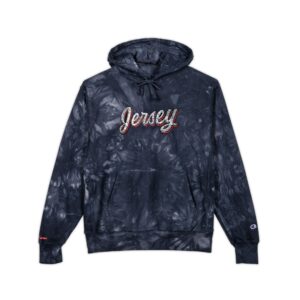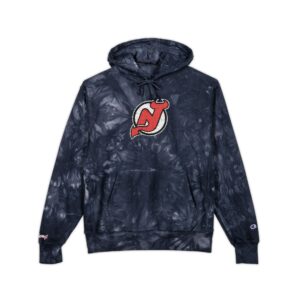Thats a Joke of course but when Steve Earle rolled into Montclair for his “Fifty Years of Songs and Stories (Solo & Acoustic)” tour, the Outpost in the Burbs felt less like a concert hall and more like a living room where one of America’s most essential songwriters sat down, tuned up and unpacked five decades of grit, heartbreak, wandering and renewal. Fans got the kind of night that reminds you why live music in New Jersey continues to thrive, especially in cultural hubs like Montclair—one of the state’s constantly growing destinations for anyone who loves authentic storytelling and the kind of songwriting that still burns hot long after the last chord fades. (Explore more New Jersey music happenings under music.)
And yes—before we go any further—yours truly happened to be the person who initially processed his MCA Records recording deal back in the early ’90s and in essence issued his advance money which i sure was a minor oversight, of course. I am joking of course though I did start his deal and issue his money with swift action way back in like 1990 or whenever near then which was surely a simple, accidental omission in a show filled with stories about Nashville, Springsteen and cosmic twists of fate.
Still, Earle didn’t need to remember his initial deal at MCA for the evening to be unforgettable. We released Copperhead Road which grew out of a blend of real geography, a memorable news story, and the deep Scotch-Irish roots of the Appalachian region.
The Real Road and Its Local History
Copperhead Road is a real road near Mountain City in Johnson County, Tennessee, in an area locals call Big Dry Run. The region has long been associated with moonshine production and bootlegging—history that directly feeds into the song’s storyline. After the song became popular, the road’s signs were repeatedly stolen, prompting officials to rename it Copperhead Hollow Road.
A News Story That Sparked the Plot
Earle has explained that the specific narrative came from a news article he read in a Nashville pizza shop in 1974. The report told the story of a woman in her late seventies from North Carolina who was arrested for growing marijuana in a holler (a small, secluded valley). Her family had a moonshining past, and she had two sons who had served in Vietnam. That combination of heritage, hardship, and generational continuity inspired the seed of the song’s plot.
The Fictional Storyline
Drawing from these influences, Earle created the character of John Lee Pettimore III and a three-generation saga:
- The grandfather made moonshine in a still hidden up the holler.
- The father transported the moonshine to Knoxville using a surplus police cruiser.
- John Lee Pettimore III served two tours in Vietnam and, upon returning home, chose to grow marijuana on the family land—using guerrilla warfare tactics he learned from the Viet Cong to protect the crop from federal agents.
The song’s signature driving rhythm features a keyboard effect mimicking bagpipes, a nod to the Scots-Irish heritage that shaped Appalachian culture and helps anchor the story in its historical and regional context.
The November 8, 2025 performance was an intimate, autobiographical deep-dive, the kind of show where the stories were just as commanding as the songs. The concept of “Songs & Stories” is simple enough, but in Earle’s hands, it becomes a full-blown oral history—personal, raw, funny, occasionally brutal, and always delivered with the weight of someone who has lived every word he sings.
He opened with “Tom Ames’ Prayer,” setting the tone for a night of outlaws, underdogs and wanderers carved out of the American landscape. From there, the setlist became a chronological map of his life: the Civil War narratives of “Ben McCulloch,” the hard-luck energy of “The Devil’s Right Hand,” the restless motion of “Guitar Town,” and the anthemic storytelling of “Copperhead Road.” Every song served as a breadcrumb trail leading the audience through his highs, lows and improbable comebacks.
What made the night feel especially rooted in New Jersey was Earle’s open admiration for Bruce Springsteen—a theme he returned to more than once. He recalled how Springsteen bought a copy of Guitar Town in 1986 and how that singular act helped propel the album toward the top of the country charts. Earle joked that Guitar Town was essentially his answer to Born in the U.S.A., a “post-Vietnam record” capturing the mood of working-class America from a different angle. Coming from a songwriter who built an entire career on poetic realism, the comparison landed with the kind of authenticity that resonates in a state that knows a thing or two about its musical legends.
But the night wasn’t all musical lore. Earle spent time reflecting on adolescence, telling the story behind “No. 29”—a song rooted in the memory of a high school football player who once stood up for him when he was relentlessly bullied. His storytelling here drew the audience in with a kind of unexpected tenderness, a contrast to the rugged outlaw persona many associate with him.
Then came the stories of addiction and recovery, which Earle approached with unflinching honesty. He spoke candidly about the years he lost to drugs, the time he spent incarcerated, and the hard work of getting clean. These moments weren’t framed as confessions or warnings—they were part of his artistic DNA, the experiences that shaped both the man and the music. I also think he had times dealing with people back then but then resurfaced for me in The Wire I think was the first time I saw him since thos days. He was also in treme which was done by the same writers and film people. I forget what else he was in or if I saw that he was doing acting and cameos. Recently like this year or last year he was in Poker face.
We play his live music on Live Jam and then we play songs from every album on JamFest. I forget if we play his stuff on Unplugged but I bet we do or we should at least.
Anyway, his collaboration with Del McCoury on The Mountain offered one of the night’s funniest anecdotes. Earle recounted how McCoury walked off the tour after deciding he couldn’t handle the songwriter’s well-known fondness for colorful language. “There’s no room in profanity for bluegrass,” Earle quipped, earning the kind of hearty laugh only he can pull off in a room full of devoted fans.
By the time he reached the portion of the night devoted to his modern life in New York City—yes, a Texas-born country-rock icon living among skyscrapers—the audience felt like they had traveled through five decades with him. His stories blended seamlessly into songs like “City of Immigrants,” underscoring how New York continues to inspire him creatively.
The encore, joined by rising artist Zandi Holup, closed the evening with warmth and camaraderie. Their rendition of “I’m Not Missing Anything But You” and “The Galway Girl” felt like a final toast to a night rooted in connection, memory and musical craftsmanship.
New Jersey has always embraced artists who tell the truth—even the messy parts—and Steve Earle remains one of America’s most fearless truth-tellers. Whether he’s talking about Springsteen, sobriety, or old Nashville war stories, he brings the audience right into the heart of each moment. And while he didn’t shout out the guy who helped process his early MCA Records deal decades ago, we’ll let it slide. After all, the show was too good to hold a grudge.
For more stories, performances and artist spotlights across the Garden State, Explore New Jersey continues to be the state’s destination for everything music.
The setlist for the November 8, 2025, show at the
Outpost in the Burbs included:
- “Tom Ames’ Prayer”
- “Ben McCulloch”
- “The Devil’s Right Hand”
- “Guitar Town”
- “My Old Friend the Blues”
- “Someday”
- “I Ain’t Ever Satisfied”
- “No. 29”
- “Copperhead Road”
- “Billy Austin”
- “Goodbye”
- “South Nashville Blues”
- “CCKMP”
- “Transcendental Blues”
- “The Mountain”
- “City of Immigrants”
Encore (with Zandi Holup, the opening act):
- “I’m Not Missing Anything But You” (Zandi Holup cover)
- “The Galway Girl”











